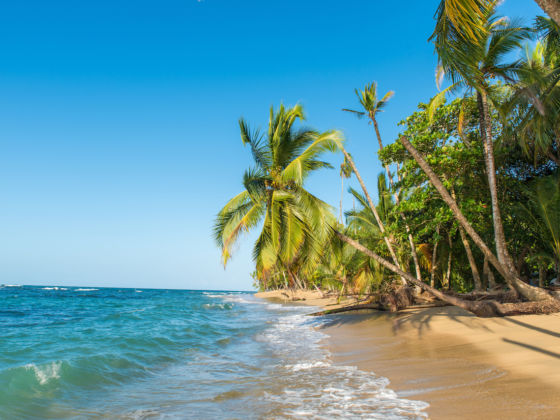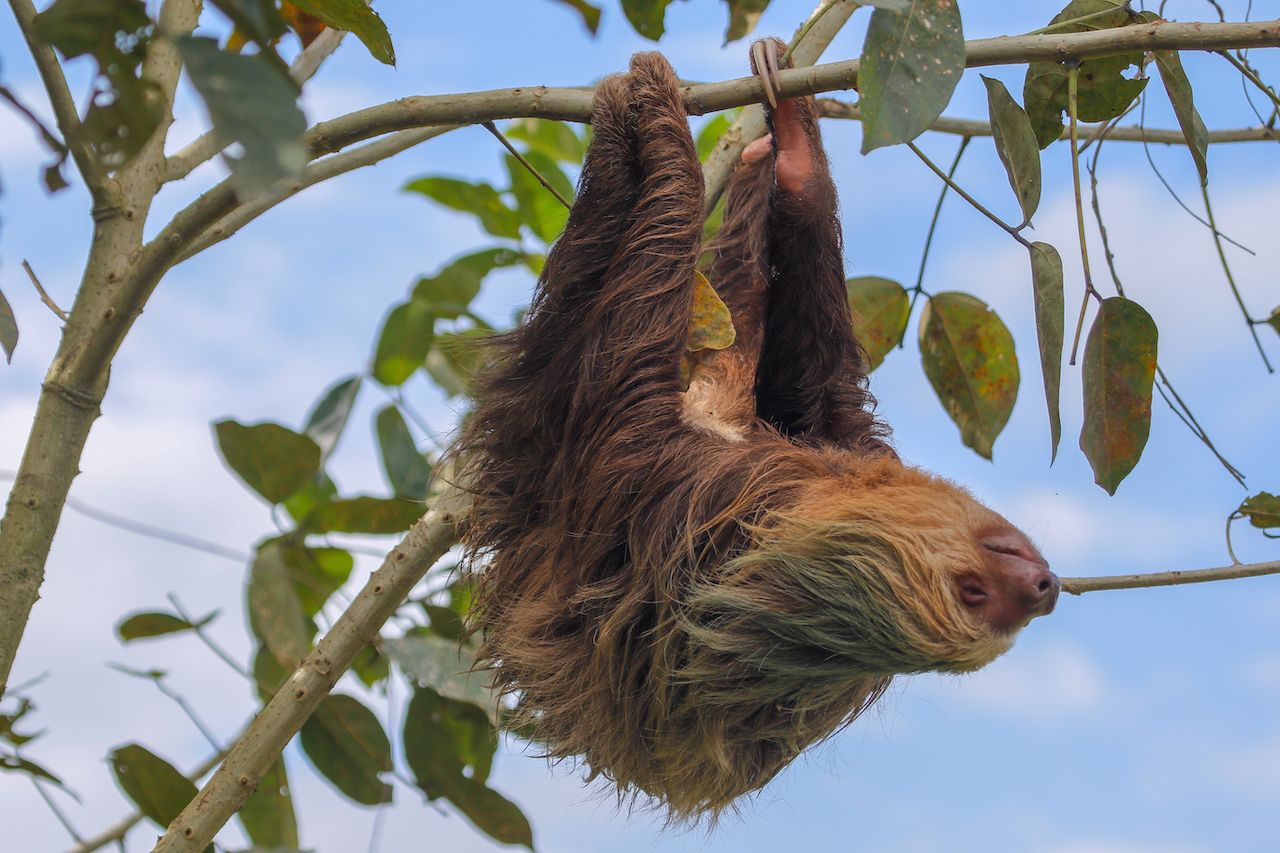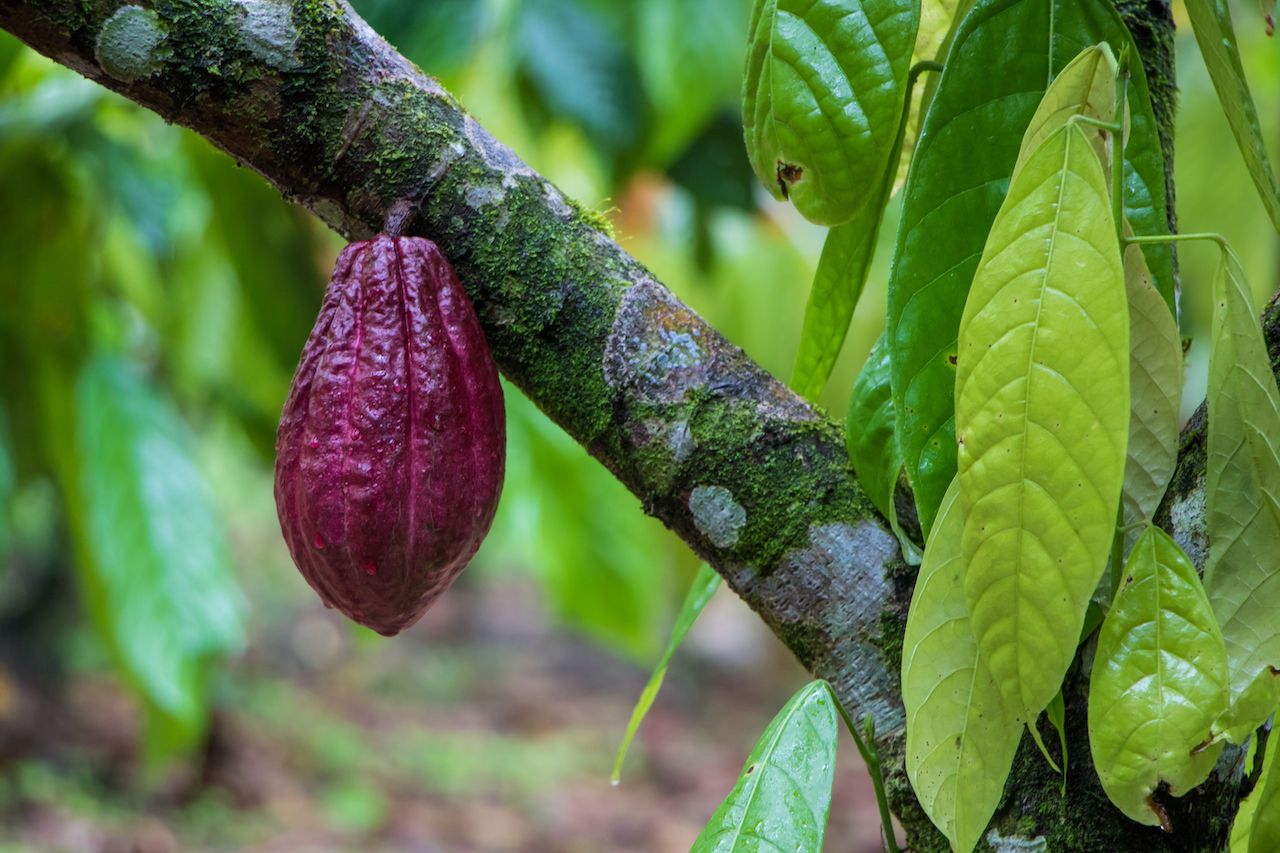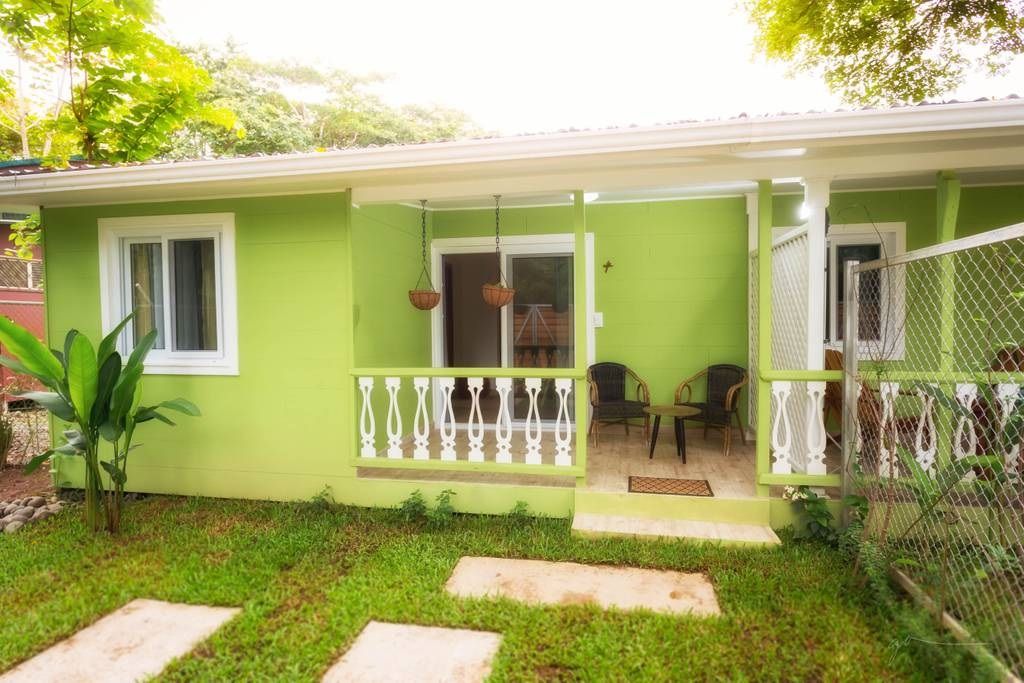The beach town of Puerto Viejo de Talamanca is located on the Caribbean coast of beautiful Costa Rica. The African slave trade forcefully brought people here in the 16th century when slaves accompanied Spanish colonizers and were made to work on cacao plantations. When African descendants in Puerto Viejo were emancipated after slavery was abolished in 1923, they were joined by Afro-Caribbeans from Panama, Nicaragua, and Colombia, and formed settlements along the coast. Today, the unique Afro-Caribbean vibe is thriving in Puerto Viejo — here are eight opportunities for travelers to experience it to its full extent.

1. Spot sloths in Cahuita National Park.

Photo: matthieu Gallet/Shutterstock
The protected Cahuita National Park is a quick bus ride away from Puerto Viejo and is the best place to see some of Costa Rica’s incredible wildlife in the area. The massive biodiverse nature reserve is free to enter, but you’re encouraged to make a donation to contribute to the conservation efforts.
The trail is very flat and easy to walk. It includes a few areas of wooden walkways over mangroves where you might spot caimans and a sandy path right along the coast where sloths, coatis, and monkeys are often seen. It’s possible to snorkel in the calm, turquoise bays where dolphins, hawksbill sea turtles, manta rays, blue parrot fish, and over 120 other species of fish live in the sea among 35 different species of corals.
2. Take an Afro-Latino dance class.
Work up a sweat and learn about the unique culture of Puerto Viejo at an Afro-Latino dance class. Wuanda is the local Afro-Caribbean dance instructor who was professionally trained at Alvin Ailey. Dance is her form of communication and art, as she speaks with her movements of her ancestors’ past, the culture of her people, and the joy of living in paradise.
During the class you’ll be introduced to the basic language steps of the African diaspora dance — each movement has a meaning. According to Wuanda, dance is a ritual of celebration. Your nerves will melt away as Wuanda’s confidence and poise are contagious. “When you dance you learn about the culture, the music, and the movement, it’s what the people are. My lesson is not just a dance class, it’s a cultural tour,” she says.
Don’t worry about your moves — just let loose and enjoy the music. Local Afro-Caribbean men play the drums during the dance class to set the beat. Various dance styles are covered from traditional African movements, reggae, soca, dancehall, as well as Latino bachata and salsa. After the class, you’ll be ready to impress the locals with your moves at Salsa Brava Beach Bar which transforms into a Caribbean dance club at night.
3. Catch a wave with local surfers.

Photo: Surf the Jungle Surf School/Facebook
Surf the Jungle is a professional surf school owned by a local Caribeño, Misael. He taught himself how to surf as a kid by sharing a broken board with a few other local boys and has been surfing for over 20 years. Misael speaks about the famous local Salsa Brava wave with an immense passion.
Two-hour surf lessons are available daily at Playa Negra or Playa Cocles for all levels. All of the instructors are local and open water rescue certified by the International Surfing Association, so if you’re a little nervous don’t sweat it, you’re in good hands!
The best time of year for big swells is between January and March. If you’re looking to capture that moment of you first catching a wave for the gram they have a surf photographer available for hire. The shop also offers snorkeling, stand up paddle boarding, and kayaking tours.
4. Visit the local weekend crafts and produce markets.

Photo: phortun/Shutterstock
If you’re in town over the weekend, head to the local market at the Old Harbor. On Saturday’s there’s a farmers market with stalls overflowing with local fruits, veggies, and treats from 6:00 AM to 12:00 PM. The Sunday market is the place to shop for locally-made artisan souvenirs and handicrafts from 3:00 PM to 8:00 PM.
5. Be a chocolate maker for the day.

Cacao pods growing on a cacao tree in Costa Rica. (Photo: Joseph Jacobs/Shutterstock)
Cacao has roots in Latin America as the chocolate tree grows naturally 20 degrees above and below the Equator. The cacao plant has medicinal and spiritual value to the indigenous BriBri people who are native to the northern region of Costa Rica near Puerto Viejo. You can take a chocolate making class in Puerto Viejo to learn how the fruit is cultivated and transformed by hand into chocolate, and hear the folklore of the BriBri people who believe that the cacao tree is a woman.
Ancel is the owner of the cacao farm and artisanal chocolate company — she’s dedicated to only employing BriBri people. You’ll have the chance to make chocolate from scratch and get to taste test your sweet batch to see how the cacao transforms after roasting, grinding, tempering, and molding. The heirloom chocolate is 70 percent cacao and 30 percent sugar, which is an extraordinarily high yield.
Chocolate making is a delicious hands-on experience and it’s a unique treat to get to learn directly from people who’ve been making it for thousands of years. At the farm, you can also stroll through the gardens to see over 160 native tropical fruit and nut trees. Occasionally toucans and macaws snack on the tree’s bounty so keep your eye peeled.
6. Chow down at plant-based cafes.
Try a few plant-based renditions of local meals while in Puerto Viejo to be a more sustainable traveler. Coconut milk is the base for many popular dishes including the must-try local breakfast of black beans and rice with coconut milk which is best enjoyed at the locally-owned Soda Lidia’s Place.
For an innovative take on traditional dishes head to Tierra Madre. The laid-back, open-air restaurant is owned by a Costa Rican-Italian couple who love to put their own spin on traditional cuisine. The best thing on the menu is the breadfruit gnocchi — a recipe unique to Tierra Madre. They also have plenty of meat dishes and unique vegetarian ravioli made from mango and avocado.
There’s a locally-owned street cart on Avenida 71 that sells vegan cookies in traditional flavors such as ginger, coconut, or coconut with ginger. The Salsa Brava Rasta Bar offers an assortment of Caribbean-inspired dishes that are vegan-friendly.
7. Stay in traditional casita houses.

Photo: Airbnb
While in Puerto Viejo, do as the locals do and stay in a traditional casita house. Casitas are generally one level and have one or two bedrooms, a kitchen, bathroom, living room, and spacious front yard.
Most casitas are locally operated and reasonably priced. There are a few casita accommodations available on Airbnb. I stayed in this beautiful lime green casita with a shaded yard that’s just a five-minute walk from the busy town center and very close to the beach.
8. Listen to traditional Lemon calypso music.
Lemon calypso is the official soundtrack of Puerto Viejo. It’s played in every shop and taxi but sadly, there aren’t many opportunities to see the music performed live in Puerto Viejo any longer. The Lazy Mon beach bar has musical performances nightly from 5:30 PM to 6:30 PM, and occasionally the bands play traditional Lemon calypso music so check the schedule of performers when you get to town.